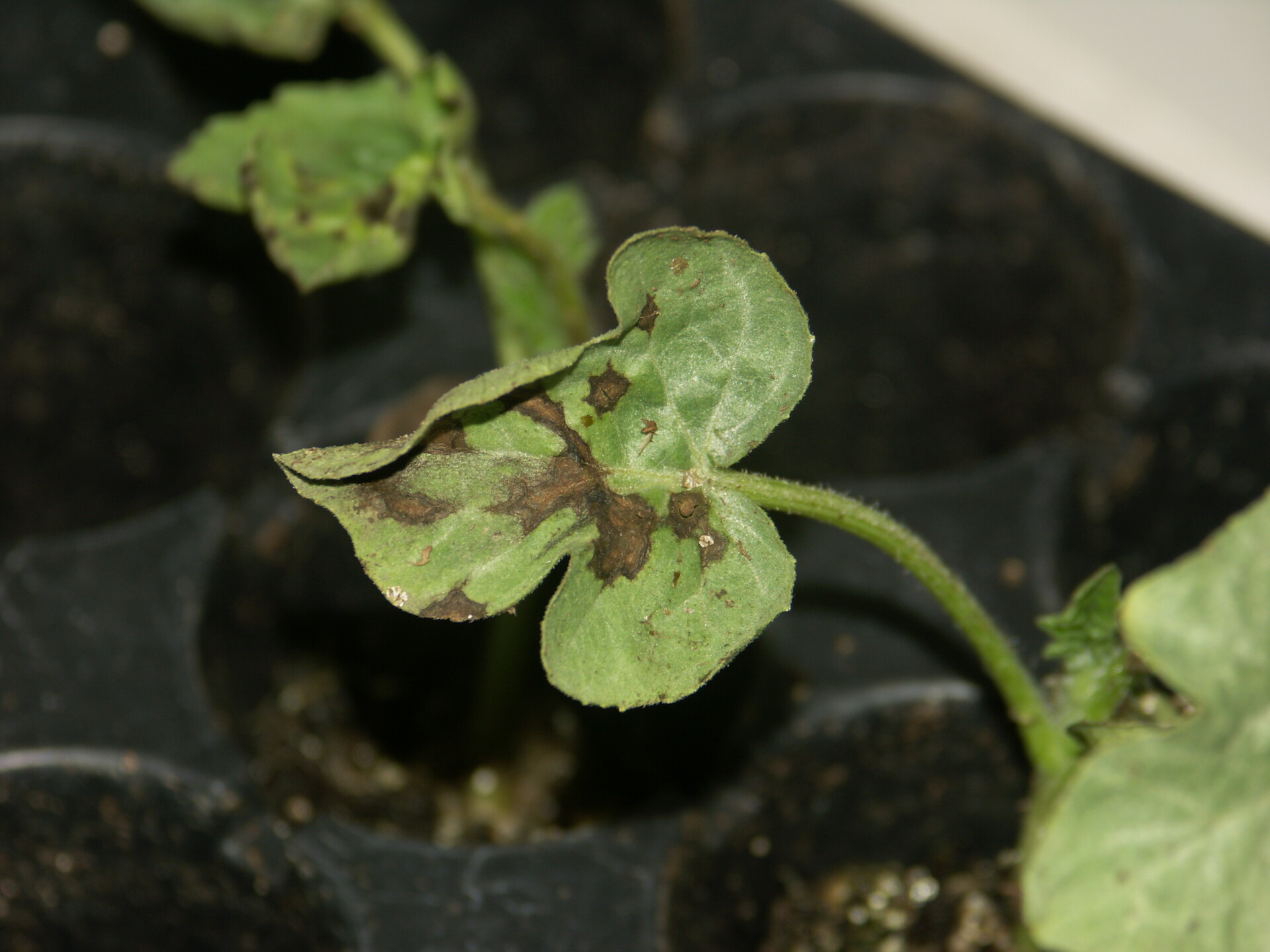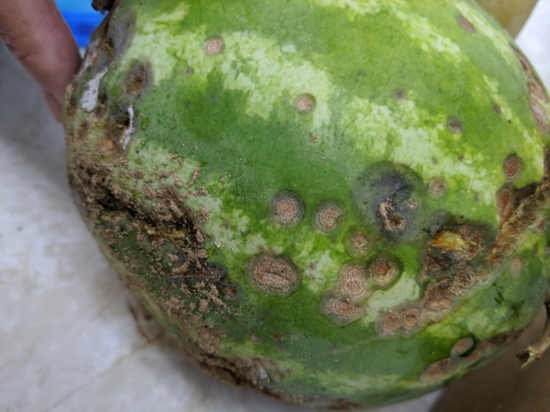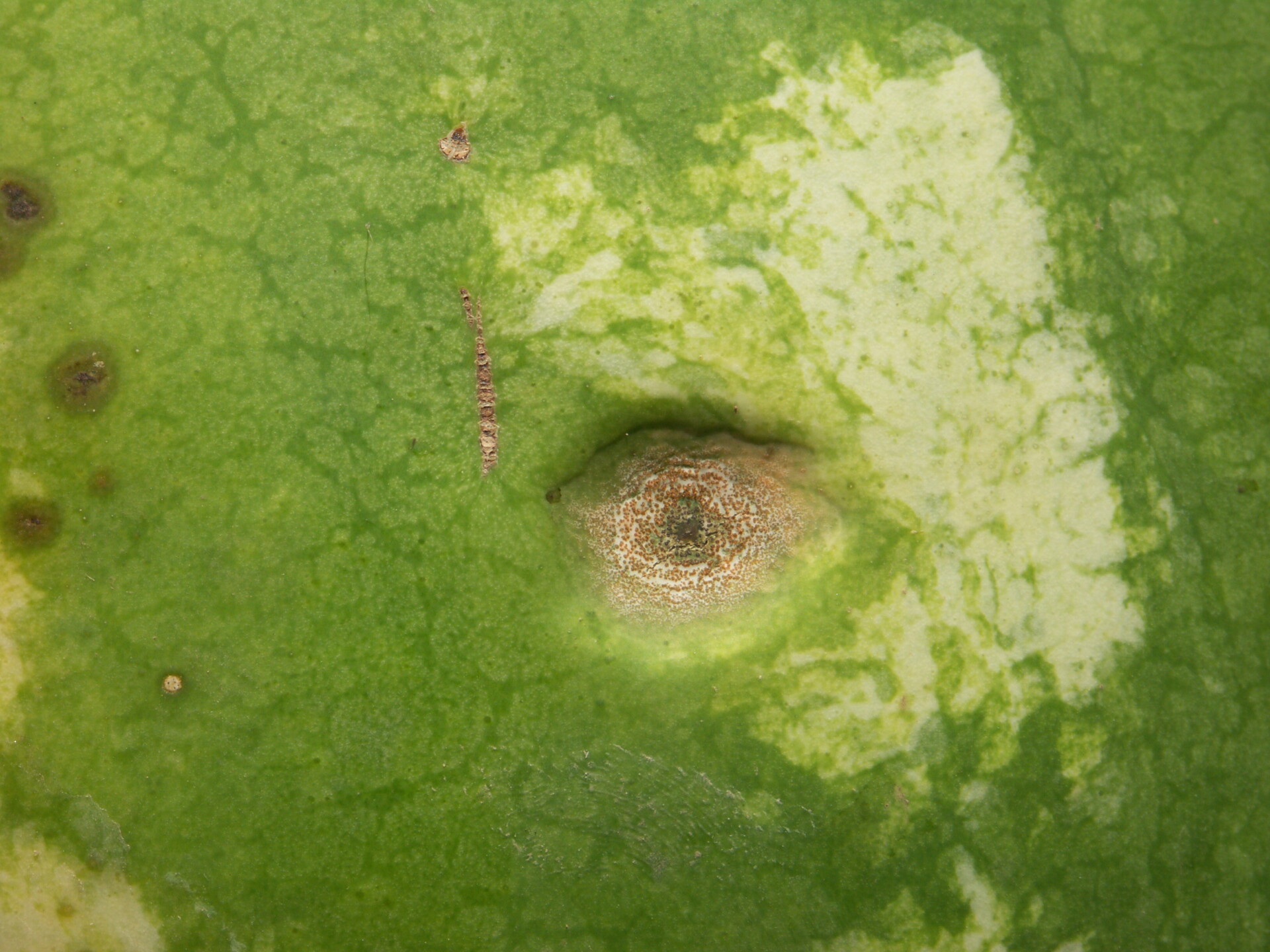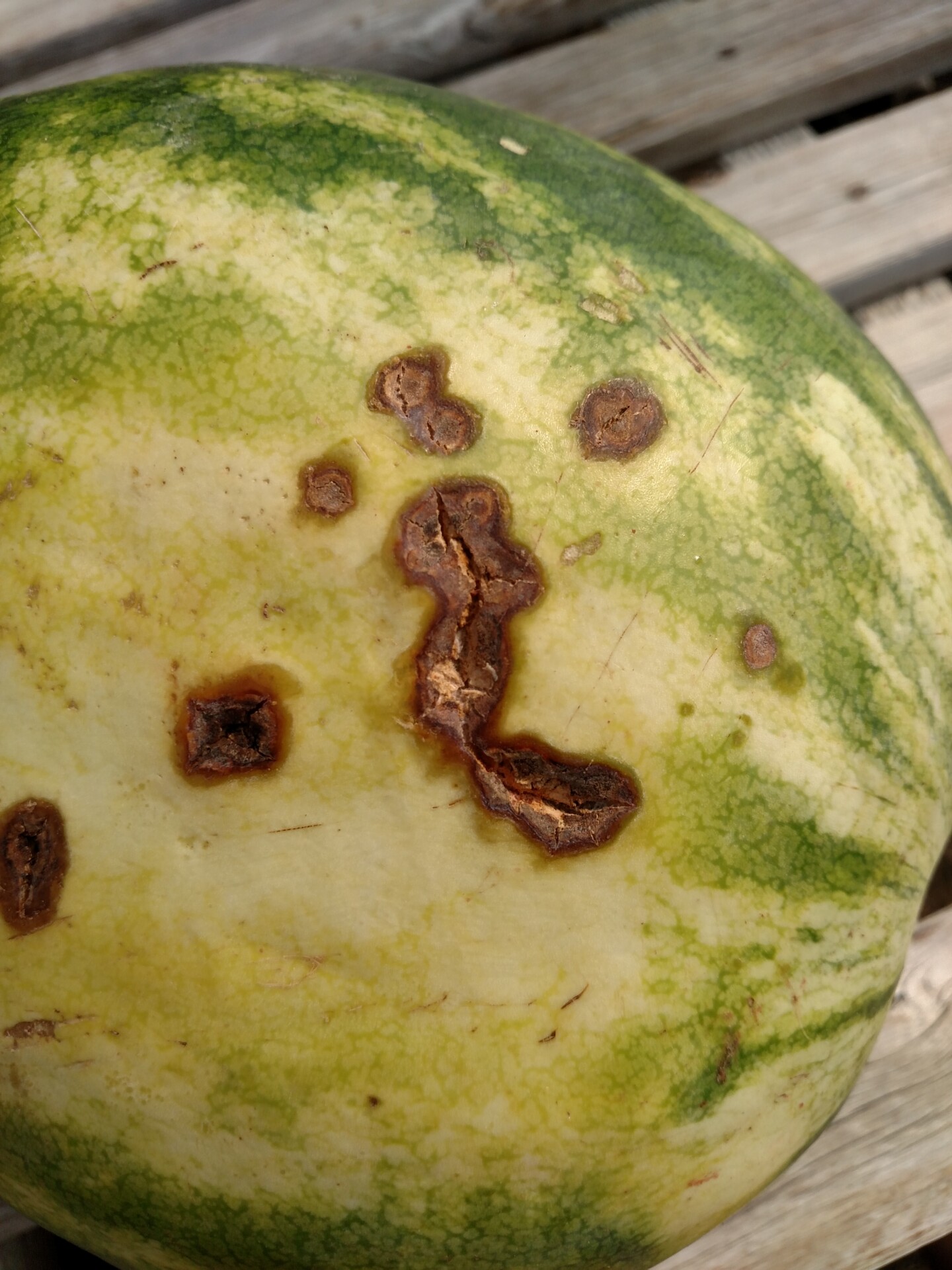anthracnose of watermelon
 Figure 2. Anthracnose lesions on the hypocotyl of these watermelon transplants has caused the plants to wilt.
Figure 2. Anthracnose lesions on the hypocotyl of these watermelon transplants has caused the plants to wilt.  Figure 3. Anthracnose lesion on several watermelon transplants. Lesions are primarily on cotyledons (seed leaves).
Figure 3. Anthracnose lesion on several watermelon transplants. Lesions are primarily on cotyledons (seed leaves). 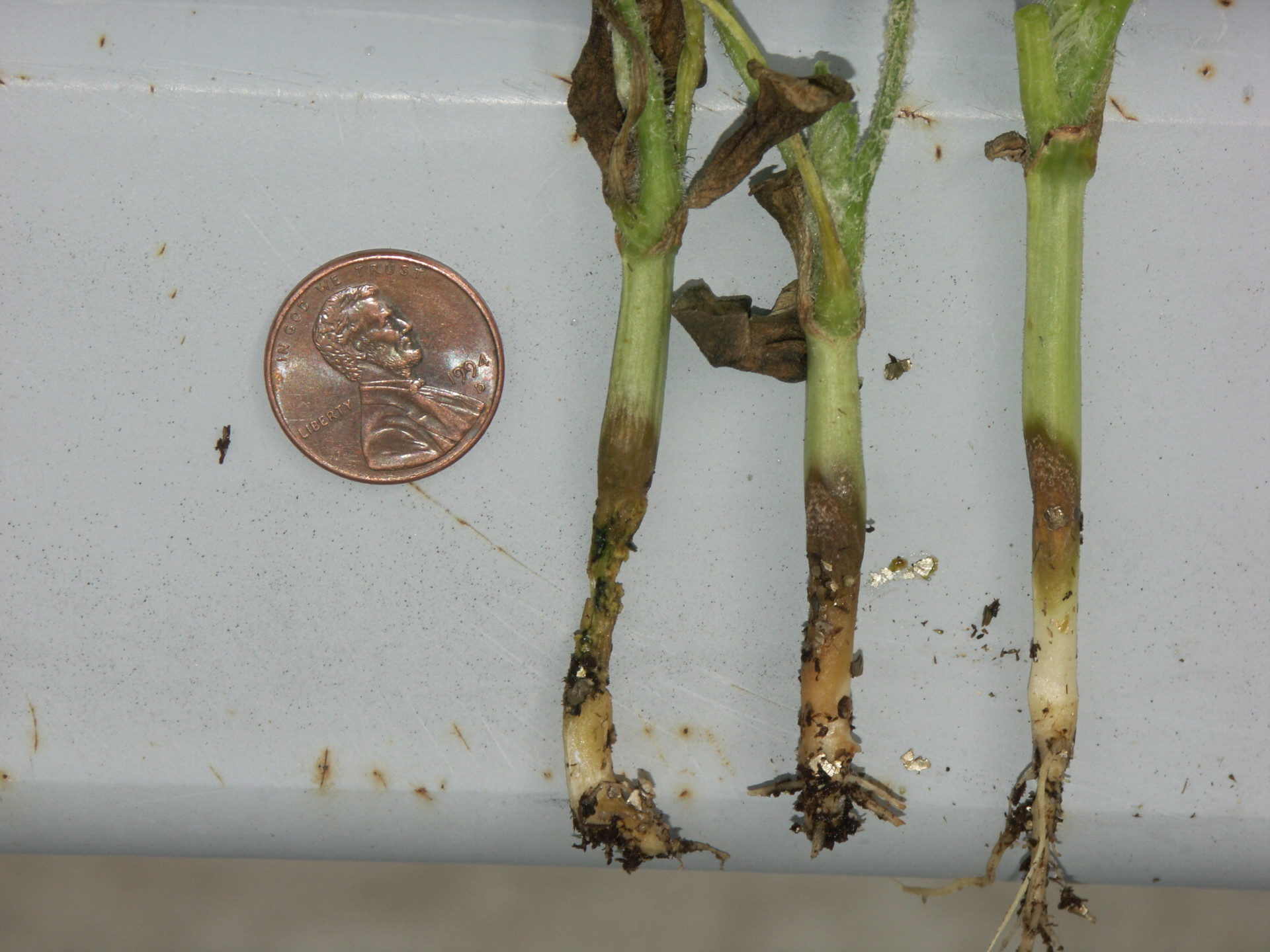 Figure 4. Anthracnose of watermelon occasionally causes lesions on the hypocotyl, between the cotyledon and the soil.
Figure 4. Anthracnose of watermelon occasionally causes lesions on the hypocotyl, between the cotyledon and the soil. 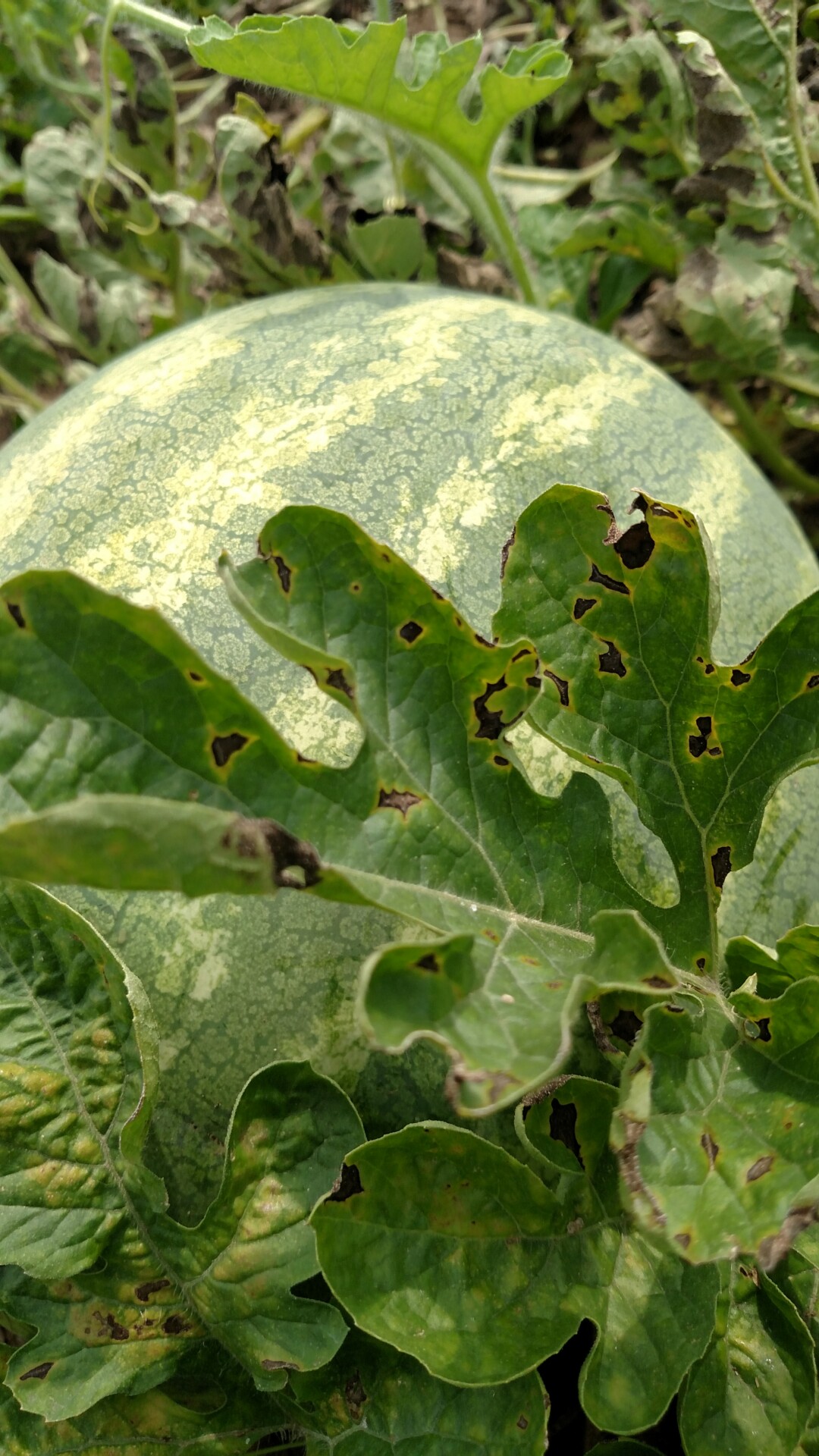 Figure 6. Another photo of anthracnose of watermelon on a leaf. Note the yellow color on the margin of the lesions.
Figure 6. Another photo of anthracnose of watermelon on a leaf. Note the yellow color on the margin of the lesions.  Figure 8. A close-up of a lesion of anthracnose on a watermelon leaf. Note the sharp, angular shape of the lesion.
Figure 8. A close-up of a lesion of anthracnose on a watermelon leaf. Note the sharp, angular shape of the lesion. 
